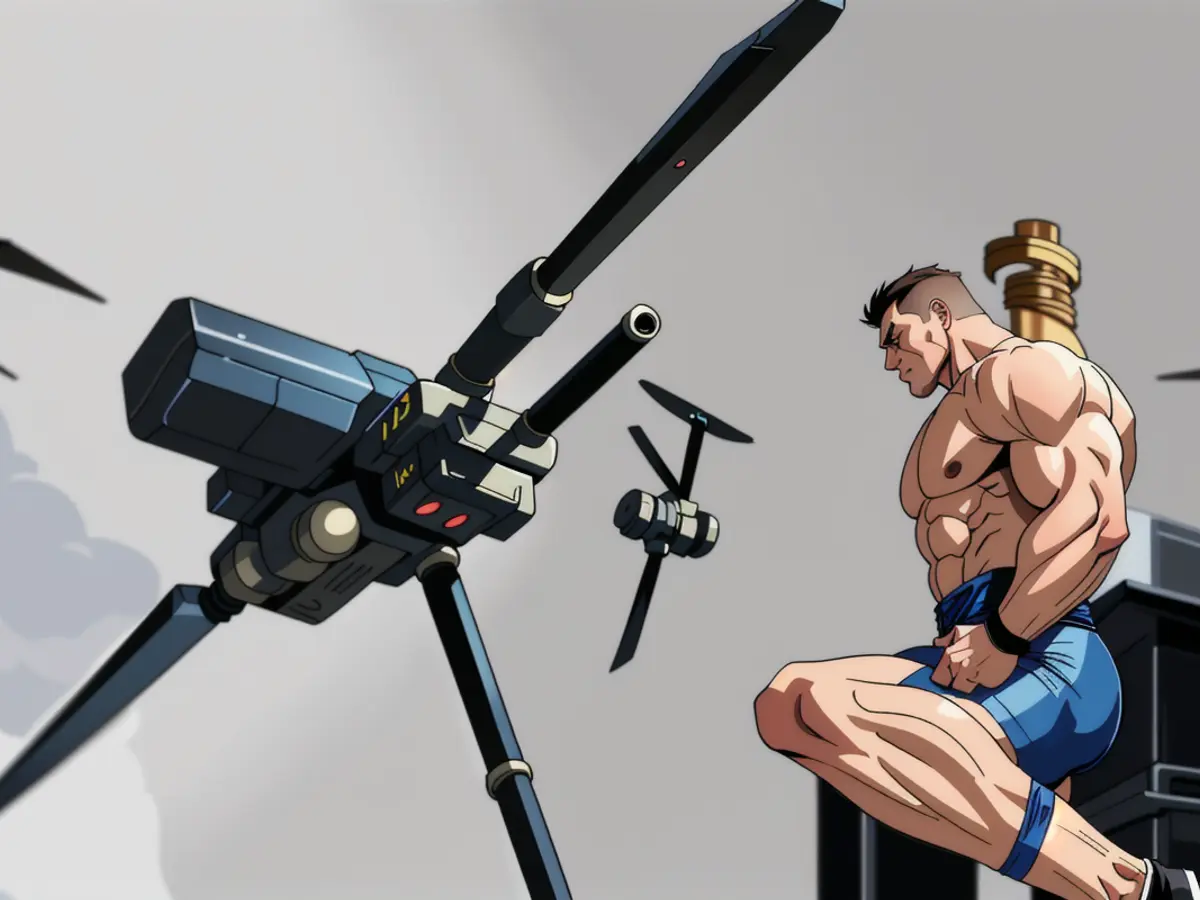Building a "Drone Wall" on NATO's Eastern Front: Is Germany Ready?
NATO should construct a drone barrier along its eastern border, according to Helsing's recommendation.
The defense company Helsing, renowned for its AI-powered combat drones, is proposing an innovative solution for the protection of NATO's eastern border - a "drone wall." This wall would consist of autonomous systems, satellites, and surveillance drones, built for democratic societies.
Munich-based Helsing, a firm specializing in AI application in the defense sector, has already introduced the HX-2 drone for use in Ukraine. Equipped with AI to guide explosive payloads, the HX-2 demonstrates less susceptibility to interference. The company has also partnered with French startup, Loft Orbital, to monitor borders and troop movements using satellites. Collaborations with Saab focus on integrating an AI application for air combat into the Gripen fighter jet, and plans are underway for an autonomous system for sea use.
Can Democracies Use Technology for War?
The combination of surveillance and combat drones creates an intelligent barrier, allowing the targeting of enemy forces while letting own troops pass. "Autonomous systems are made for democracies," says co-CEO Gundbert Scherf. He argues that such asymetric technology is essential for democracies, as they value life and cannot wage a costly war of attrition.
Germany's stance on using armed drones has always been contentious. Even in 2020, long-standing objections pertaining to drones as attack weapons persisted. The geopolitical shift in Ukraine forced a rethinking of this stance.
Germany's Drone Delay
If the eastern flank of NATO, spanning 3,000 kilometers, is to be secured with masses of combat drones, Germany needs to accelerate its efforts [1]. The current debate in Germany is reminiscent of Cold War mentality, with an emphasis on reaching parity with large investments. However, a focus on asymmetric technologies is warranted, as underscored by recent events in Ukraine [2].
The Human Element Remains Crucial
Despite the integration of AI in autonomous weapon systems, human intervention remains essential. For example, the HX-2 drone navigates to its target using AI, but the human operator must approve the target. This sequence of navigation, detection, and mission execution follows, with Ukrainian soldiers scheduled to be operating these systems within a few weeks [3].
European Drones on the Horizon
At the Munich Security Conference, Helsing announced plans to produce 6,000 additional combat drones for Ukraine, in addition to the current supply of 4,000 drones. The construction of "Resilience Factories" within various European locations suggests a potential local manufacturing capacity of tens of thousands of drones per month in case of conflict [4].
- Drones
- Military
- Artificial Intelligence
- NATO
- Arms
- Arms Industry
[1] ntv.de, Carsten Hoffmann, dpa[2] Europeans Must Bolster Defense, Especially Along NATO's Eastern Flank, Argues Former NATO Chief Stoltenberg, Euractiv, March 9, 2023[3] The Role of Autonomous Systems in Modern Warfare, Military Technology Insider, June 1, 2023[4] Estonia to Boost Defense Spending in Response to Russia, Reuters, March 8, 2023
- The proposed "drone wall" by Helsing, a Germany-based defense company, involves the deployment of thousands of AI-powered combat drones, aiming to secure NATO's eastern front.
- In Kyiv, Ukrainian soldiers are being trained to operate the HX-2 drones, a drone developed by Helsing and equipped with AI for navigation and targeting, but requiring human approval for missions.
- The European arms industry is showing a growing interest in the development and production of drones, with plans to construct "Resilience Factories" capable of producing tens of thousands of drones per month, as revealed at the Munich Security Conference.









